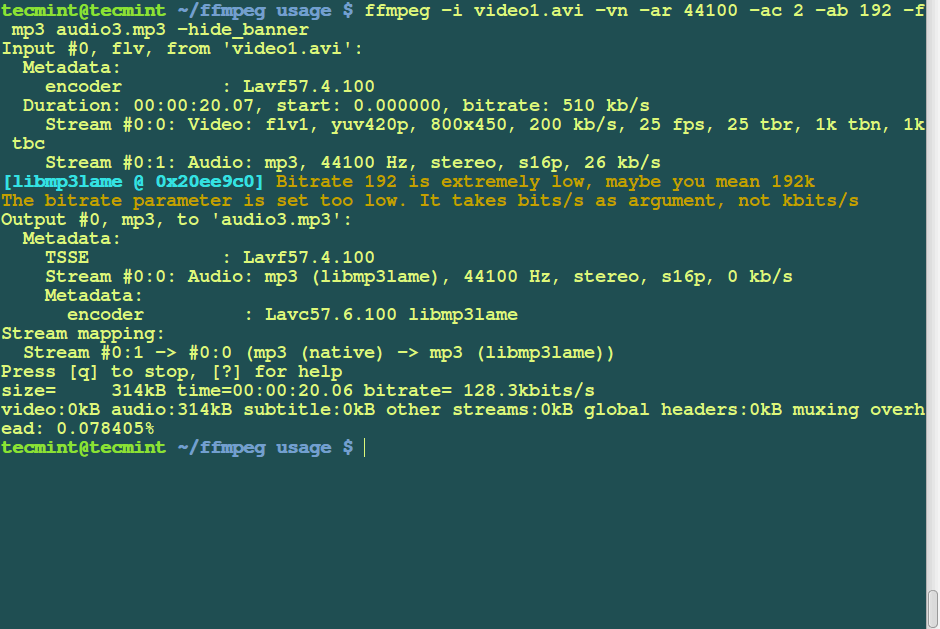

It's great if you want to learn more about testing! The package itself is compatible with Laravel 5.1 and up but for this blogpost I'll use Laravel 5.4. I'm not digging into writing tests but if you're interested I suggest to take a look at Test Driven Laravel. Feel free to adopt if you like it or change it where needed. Of course this example is just one way of doing it. The example below is not taken from one of these projects but the goal is to give you a sense of what you could do with this package. We use this package ourselves in three different production environments. Note – you must specify the -framerate as the first argument of the FFmpeg command or it will not work.After some issues that got opened on GitHub I decided to write a blogpost on the Laravel FFmpeg package we created. Typically for slideshows, you will want a slow framerate of maybe 0.1fps.įfmpeg -framerate 0.1 -i %d.jpg output.mp4 You can reduce or increase this value using the -framerate flag. This is because the default framerate for FFmpeg is 25fps. You will notice that the image sequence in your output video moves super fast.

Replace 720 with the height in pixels that the video should be. If you get an error saying height not divisible by 2, scale the output like this to fix the problem: You can tell FFmpeg to start counting at a number other than 0 using the -start_number flag like this:įfmpeg -start_number 3 -i %d.jpg output.mp4 The default behaviour of FFmpeg is to start at 0 and continue counting up until no more files are found when it is given a placeholder number. In the FFmpeg command, specify the input file as %d.jpg followed by the name of the output file. Now move to the image-sequence directory in the terminal:


 0 kommentar(er)
0 kommentar(er)
